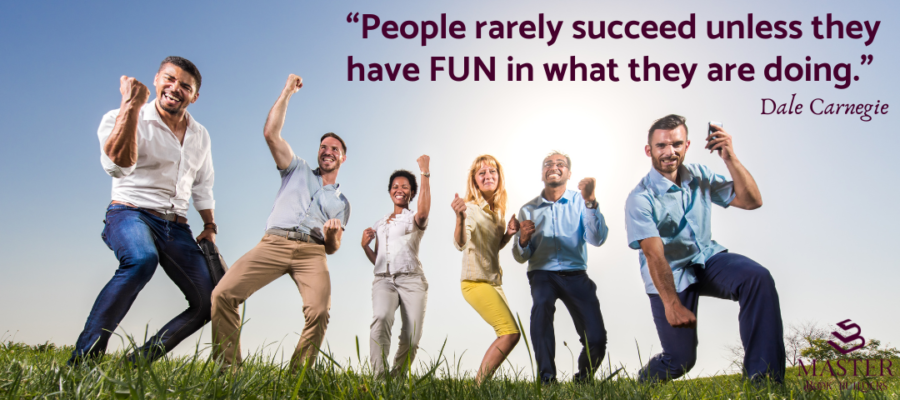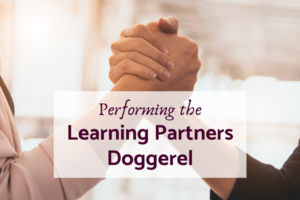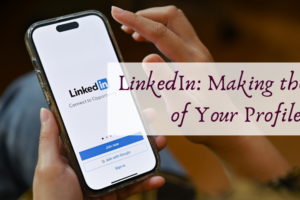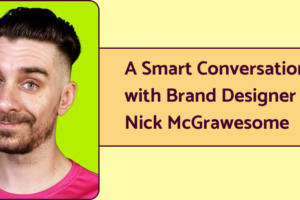How to build fun into your brand statement: the Old Dog Learning Limerick
After “retiring” from our BlogPaws business, I spent a lot of my time on getting clear about the work I want to do going forward and how to make life meaningful. Turns out helping you on that same kind of quest for clarity and purpose is a big part of what I’m offering in my Old Dog Learning work.
My next task became describing what’s in it for you? How will our working together help you transform your life – and have fun doing it?
If you’re looking for clarity and fun in describing your work to your market, let’s see if this process might help you.
I began with Pamela Wilson’s excellent post, The Transformative Effect of a Well-Built Brand Statement. She shared a simple, fill-in-the-blanks recipe for answering that “who/how do I help” question, which she learned from Jeff Goins:
- I/We help _____________ [a specific group of customers]
- do/get _______________ [a specific problem solved]
- so they can ______________________ [enjoy these specific, transformative benefits].
Three simple steps, right? But simple is not the same as easy.
As Pamela warned, “don’t be deceived by the simplicity of this exercise.”
As we walk through how I’ve been using this recipe, including the light bulb moment when I found a way to add FUN to the ingredients, I’ll be sharing a good bit of my thought process. I’ll also stop here and there and invite you to compare how your own skills and experiences can be expressed to fill in the blanks in a branding statement for your work.
After a few drafts . . .
The exercise forces you to get serious about articulating your value clearly and succinctly. As a result, I’ve spent a fair amount of time thinking about the folks I want to devote my time to helping, what kinds of problems I’m best able to help them solve, and how their lives and businesses will be transformed when we work together.
Filling in those blanks, I got this far:
- Old Dog Learning helps _people feeling stuck at transition points__
- _navigate to doing what they love__,
- so they can __refocus, get moving, and enjoy more fulfilling lives_.
Here’s how I analyzed each of the three ingredients of the brand statement recipe to decide how each blank should be filled in for Old Dog Learning.

Step 1 gets at the “who” question
Who do I want to work with? What kind of person, with what kind of problem, can I help most?
After considering my varied work roles in the past and the people I’ve worked with or observed over the years, I realized that I hate seeing people who feel stuck at transition points in their professional or personal lives. This can happen at any age, of course. It’s happened many times to me.
We may be unhappy with the work we’re doing or any of our professional or personal relationships. Or we might have stopped doing something or ended a relationship (voluntarily or not). Or finished a major life stage like graduating from any level of formal schooling or reaching “retirement” age (self-defined or imposed).
I’m sure you can tick off many other transition points where we find ourselves spinning our wheels and unable to move ahead. Perhaps we even had a well-defined, carefully thought-out plan for what’s next that suddenly seems dull, or unrewarding, or just wrong for us. Perhaps that path has been taken away by unforeseen circumstances.
And we face the question: What now?
Been there, repeatedly. My whole adult life has been a series of transition points, personal and professional. And yes, I have felt stuck, confused about what to do next, and been damn near broke at various times — even scraped by on food stamps for one semester.
I’ve been supporting myself since right after high school, when I worked on construction crews building swimming pools, decks, and such. I never saw that as a career, but with all that overtime I made more money from April to August than both my parents combined did working full time all year. That got me through college and law school. So during that period, I was transitioning from professional school student to manual laborer and back, frequently.
In my 25 year legal career, I transitioned from law firm associate, to partner, to “of counsel” status — all with the same firm. During that time, I got married, raised two wonderful kids, and went through a divorce. Stressful, but we managed to come out friends and still get together at holidays and major family events.
Fifteen-plus years ago, I left the practice of law to begin my serial entrepreneur phase, starting a legal information design and knowledge management consultancy. Actually, the entrepreneurial spirit was always there, since I’d already transitioned from a trial lawyer to building a successful niche practice as an appellate lawyer inside my old law firm.
Enter Yvonne.
The amazing, wondrous personal transition from newly-single to sharing life with Yvonne quickly morphed into what we call being PIATs, “Partners-In-All-Things.” We launched and operated a book publishing business for seven years. We expanded that company to offer blogging and social media consulting for authors and solo-preneurs, then to a major university’s graduate business school, and then to a Fortune 500 company in the pet industry.
And then we pivoted, yet again, launching BlogPaws in 2009, growing it to the premier pet social media conference and online community, before being acquired by Pet360, Inc., now part of PetSmart, Inc.
Oh, and in the midst of all those turning points, we’ve moved five times in twelve years, including across the country from upstate New York to northern Colorado.
So in completing Step 1 of the recipe, I realized my own numerous transitions are a big part of why I’m now drawn to helping folks who find themselves stuck at transition points in their lives.
What about you? Who are you called to help? What part(s) of your past training, work experience, and personal life do you feel may steer you toward helping certain types of people with a specific set of problems?
Step 2 points to the “how” part of solving the problem for others
How can I help each client get unstuck and confidently following a new path, wherever they decide it should take them?
Well, in looking back at how I worked my way out of each of my own mud holes, I next realized that in most cases, I found help from someone else. Sometimes the help came informally from a friend or family member, sure.
But as I reviewed my own experiences, I found that the times I was stuck deepest or for the longest periods, the most effective help came from those I hired to guide me to a new path. For my divorce, we hired a mediator to teach us the positive options available and guide us to an amicable solution.
When Yvonne and I wanted to start a publishing business, we hired a business consultant to help us and spent six months researching and formulating a business plan with her help.
As we’ve repeatedly modified our business paths over the years, we’ve often worked with a mentor and peer learning groups. I can’t even type that without especially thanking Bruce Peters. He’s been there for us at many of the twists and turns in our path, providing guidance, inviting us into his groups, and ultimately becoming a dear friend. If you work with us, you’ll have to send some of the credit his way, too, since (I hope) some of his wisdom and coaching style has rubbed off.

What to call this new role?
This might seem like a diversion from the “how will I help” step, but I’ve found that what we call our work impacts how we do it. So …
The common thread that emerged from recalling how I overcame so many sticking points along my own ongoing journey is learning.
At each transition point, I needed to learn new skills, insights about myself, approaches to business, and most important, new questions that needed exploring. The best professional help I’ve received has always been rooted in teaching me how to find my own solutions.
We call such helpers by many titles: mentors, teachers, guides … when I was practicing law, I always preferred the counselor role in the phrase “attorneys and counselors at law,” because (for me) it focused on working with the client to discover a positive, sustainable solution to a problem.
In Collaborative Intelligence: Thinking with People Who Think Differently, the authors describe the work they do as professional thinking partnerships and named their company accordingly. I loved the concept of thinking partnerships from the moment I read it and felt this might well be my calling.
I soon became dissatisfied with the term, however, because I don’t believe you can start the process at “thinking.” At least not when the problem is knotty enough to make you feel stuck.
One of my influences came from working with Dr. Lee Thayer for several years, both as a participant in a leadership peer learning program he co-taught with Bruce Peters and as the publisher and page designer of four of his books. Working with him on Leadership: Thinking, Being, Doing, in particular, shaped my approach to our work in many ways. Two core principals run through the book: Leadership starts with leading oneself. And the key to leading oneself lies in your “learning plan.”
Applied to my completing step 2, then, you are not stuck because of any personal inadequacy. You just need to grow your capacity to get yourself unmired. And the great news is that emerging science shows that throughout life we have an ability to do just that: grow our capacities. I’ll return to this point and the science behind it often on this blog, so for now just accept and rejoice in the fact that your brain keeps producing new neurons and you can keep learning as long as you live.
For me then, getting to a solution almost always requires learning, first. And the learning should be ongoing, as you adjust course along the way. As a result, the services that my brand statement describes will include labels like Pro Learning Partnerships and Learning Collaboratives.
No, I do not claim to have a magic formula that will transport you instantly from here to there. We’ll need to spend some time first figuring out where your “here” is and then where you’d like to go next. Hence the word “navigate” in my draft branding statement above.
But as you’ve seen, I have worked through a lot of transition points, with a wide range of challenges and degrees of difficulty. And I’ve received guidance using different coaching models and become acquainted with a variety of self assessment tools, team building methods, and change processes. And I have no plans to stop looking for new ones.
From my own experience, I don’t believe there’s a one-size-fits-all “right” solution for every client. Working together, we’ll explore and learn our way to the methods and change processes that resonate best with you.
That covers my “how” for step 2. Again, what about you?
From your past training and experience, what mix of products, services, and methods can you offer to help the people you identified in step 1? What new skills should you acquire to help them solve the specific problem(s) you focused on?
Step 3 addresses the “why” aspect
Why would you invest time and money into working with me? Why will your life be better for the effort? I confess that this has been the hardest for me to reduce to a short phrase.
The phrase in my draft, “refocus, get moving, and enjoy more fulfilling lives” attempts to describe how you’d feel after working past stuck. It’s based on these teachings from Dr. Thayer:
Whether for an infant or a CEO, a real, delicious sense of life comes not from where you are but from what you are committed to achieving.
And life comes from growing the capabilities required to get there.
. . . Learning = Growth, and Growth = Life
I still didn’t know if my third line successfully communicated that “real, delicious sense of life” that will come from learning your way onto a new path. But that’s where I was in the drafting when I decided to put it aside for a little while to go learn some more …
To complete your brand statement, make sure it shows: How will working with your targeted folks to solve those specific problems transform their lives for the better?

But wait, what happened to ‘build fun into your brand statement?’
Yes, I promised you fun, didn’t I.
Well, here’s how that light bulb moment came to me:
Yvonne and I started working with some talented young women locally to deliver a workshop on Collaborative Creativity in Business. At a planning session, we were talking about what kinds of activities and exercises we could use to involve, invigorate, and inspire our attendees. Two of our collaborators, Katie and Grace, started talking about how much fun slap rap poetry battles could be (confession: I was clueless about this form, so just in case here’s a teacher vs. student rap battle example).
Not sure why, but my mind immediately jumped to limericks. And again, not sure why the synapses connected this way, but I said out loud right there in the meeting that I had been working on my brand statement and it might be fun to have our workshop attendees try putting their brand statements into limerick form. I’ve always enjoyed playing with short forms like haiku and limericks, even 140 character tweets, using their constraints to force ideas into their most concise expression.
To demonstrate, I rewrote my brand statement on my notepad, right there in the middle of the meeting! Here it is in that original form, as The Old Dog Learning Limerick:
Oh yes, this Old Dog still loves learning
And to share that with you is my yearningAt those points when you’re stuck,
We’ll get you free from the muck,On a path where your passion fire’s burning!
What do you think? Can you spot each ingredient from the recipe?
Did I succeed in adding fun to the mix? How about conveying the “delicious sense of life” I’m trying to help my clients achieve?
I’ve revised, expanded, and re-titled the limerick several times since then, responding to feedback from Yvonne, Katie, and others. In the interim, Katie has gone from our friend and collaborator to formal business coach. Here’s the current, four-verse, edition:
Learning Partners
New tricks, this Old Dog still loves learning
And to help you find yours is my yearningAny time you feel stuck
We’ll get you free from the muckOn a path where your passion fire’s burning!
A transition may be your next desired goal
Or hit you unexpected and beyond your controlWhether it’s a move you’re embracing
Or toward you, unseen, change is racingA learning partnership will get you ready to roll!
Why should learning come first? you may ask
Well, when changing course, or results, is your taskYou’ll need more information
To map out each new stationSo on your journey, in successes you will bask!
As partners in learning for a week, months, or years
We’ll gather up wisdom and conquer your fearsAnd if you still do get stuck
You’ll plow right through that muckAnd we’ll celebrate over coffee, wine, or beers!
Okay, over to you. I’m not suggesting everyone should come up with rhyming verse. Heck, then mine wouldn’t stand out as much!
How can you build fun into your brand statement? Is there something you can adjust in the wording, formatting, or delivery to make more memorable?






1 Comment
Leave your reply.